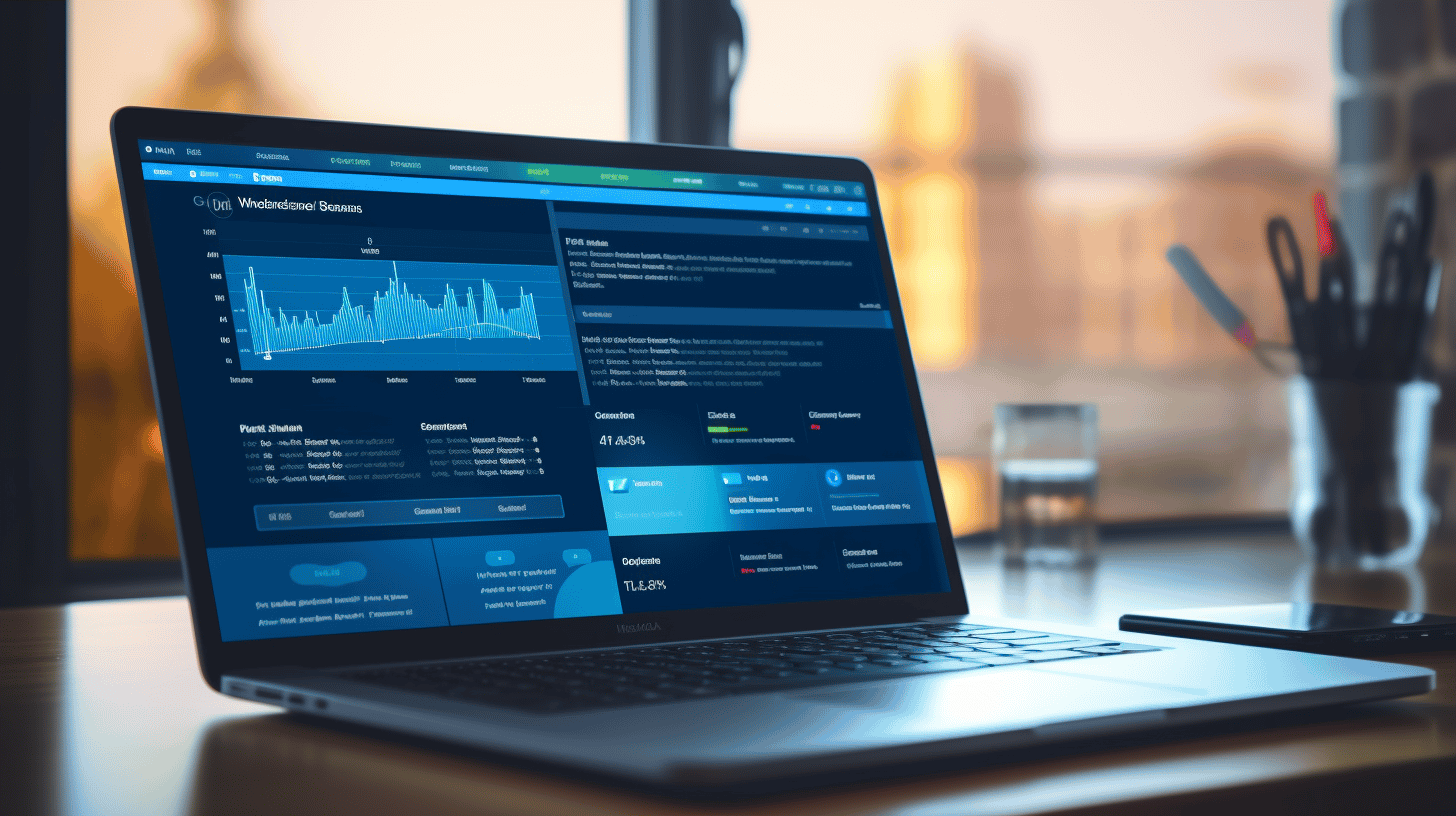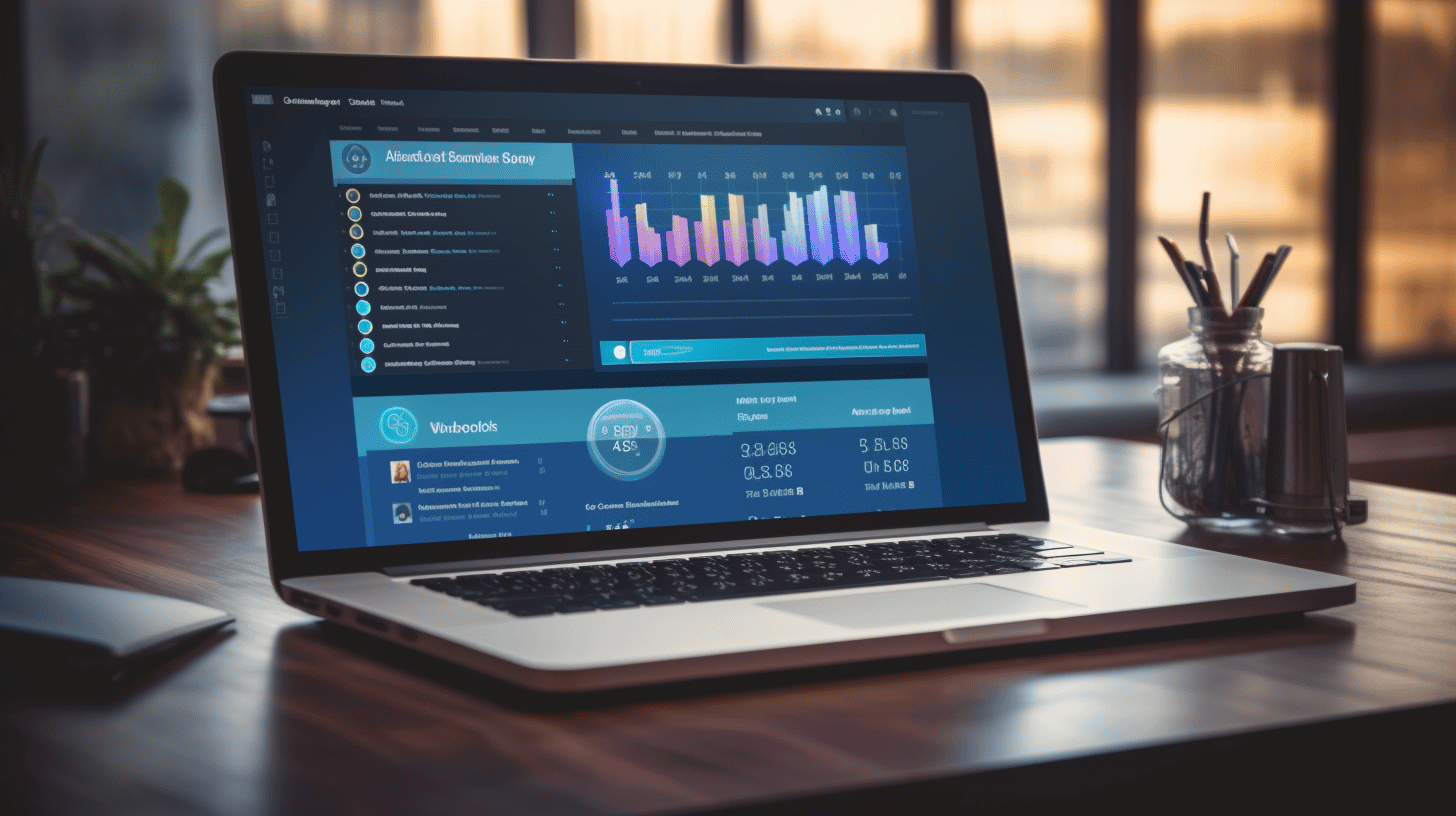在当今的数字时代,拥有一个高性能的网站对于在线成功至关重要。无论您拥有个人博客还是商业网站,网站的速度和性能都会决定您的用户体验。加载缓慢的页面不仅会让访问者感到沮丧,还会对您的搜索引擎排名产生负面影响。
幸运的是,如果您拥有 WordPress 网站,那么有一些行之有效的策略可以显著提高其性能。从优化图像到管理插件,您可以采用各种技术来确保您的网站快速高效地加载。
在本文中,我们将深入探讨 WordPress 网站性能优化的世界。我们将探讨网站速度的重要性、可能影响性能的因素以及如何有效衡量网站的性能。我们还将介绍加快加载时间、增强数据库性能的优化技术以及 WordPress 主题和插件在网站性能中的作用。此外,我们将讨论不同的托管解决方案以及定期监控网站性能的重要性。
因此,如果您准备将您的 WordPress 网站提升到一个新的水平并为您的访问者提供无缝的浏览体验,让我们深入了解 WordPress 网站性能优化的世界!
了解网站性能
🌐 您是否曾经访问过需要很长时间才能加载的网站?🐢 这很令人沮丧,对吧?好吧,您并不孤单。加载速度慢会严重影响用户体验,并最终影响网站的成功。在当今快节奏的数字世界中,人们的注意力持续时间比以往任何时候都短,因此网站提供流畅、快速的浏览体验至关重要。
网站速度的重要性
⏰ 网站速度在吸引和留住用户注意力方面起着至关重要的作用。这就是为什么优先考虑网站性能至关重要的原因:
- 用户体验:如今的用户希望获得即时满足。如果网站加载时间过长,他们很可能会放弃它并寻找其他网站。事实上,研究表明,加载时间延迟一秒会导致转化率降低 7%。速度很重要!
- 搜索引擎排名:您知道网站速度直接影响搜索引擎排名吗?Google 等搜索引擎将网站性能视为排名因素之一。加载速度慢的网站可能会被埋没在搜索引擎结果中,而加载速度快的网站则更有可能登上榜首。
- 移动优化:随着移动设备的使用日益增多,优化网站的移动性能至关重要。加载缓慢的网站尤其会让移动用户感到沮丧,导致跳出率高并失去潜在客户。
影响网站性能的因素
⚙️ 有多种因素会影响网站的性能。让我们来看看导致加载时间变慢的一些重要因素:
- 服务器性能:托管服务器的质量和可靠性会影响网站速度。确保选择一家信誉良好且服务器响应时间快的托管服务提供商。
- 文件大小和格式:较大的文件(例如高分辨率图像或视频)会减慢网站加载时间。压缩图像和优化文件格式可以显著提高性能。
- 缓存:缓存涉及将网站的某些元素本地存储在用户设备上,以便更快地进行后续访问。利用缓存技术可以减少服务器负载并提高网站的整体速度。
如何衡量网站性能
📈 如果您想知道如何衡量网站的性能,请不要担心!有几种工具可以帮助您分析和优化网站速度:
- Google PageSpeed Insights:这款免费工具可为您提供有关您的网站在移动设备和桌面设备上的表现的宝贵见解。PageSpeed Insights 提供改进建议,让您能够提高网站的速度和用户体验。
- GTMetrix:GTMetrix 是另一款出色的工具,可分析并提供有关您网站性能的详细报告。它提供有关页面加载时间、文件大小的见解,并建议优化以提高网站速度。
- 网页测试:使用 WebPageTest,您可以从全球不同位置和不同浏览器测试网站的速度。它提供全面的分析,包括页面上每个元素的加载时间明细。
准备好采取行动并改善您的 WordPress 网站性能了吗?查看此实用指南,了解如何 提高您的 WordPress 性能。实施提到的技巧和窍门可以帮助提高您网站的速度、性能和用户满意度。
总之,网站性能是为用户创造无缝浏览体验的关键方面。快速的网站不仅可以吸引用户,还可以提高搜索引擎排名。通过了解影响网站性能的因素并使用相关工具来衡量和优化它,您可以确保您的网站为所有访问者提供快速而愉快的浏览体验。
加快加载时间的优化技术
在当今快节奏的数字世界中,用户的注意力持续时间越来越短,网站加载时间对用户体验和整体网站性能至关重要。加载缓慢的网站会导致更高的跳出率和更低的转化率,这会对您在线业务的成功产生重大影响。为了确保您的网站快速高效地加载,您可以实施多种优化技术。让我们探索一些最有效的策略来增强您网站的性能。
图像优化
图片是任何网站的重要组成部分,因为它们有助于增强网站的视觉吸引力并吸引用户。但是,大型且未压缩的图片会显著减慢网站的加载时间。通过优化图片,您可以在视觉质量和文件大小之间取得平衡,从而缩短加载时间。以下是优化网站图片的一些技巧:
- 压缩:使用图像压缩工具或插件来减小图像的文件大小而不影响视觉质量。
- 图像格式:根据图片类型选择合适的图片格式。例如,JPEG 格式适合包含多种颜色的复杂图片,而 PNG 格式则适合包含透明度的图片。
- 图像尺寸:将图片上传到网站之前,请将其调整为正确的尺寸。避免使用 HTML 或 CSS 调整图片大小,因为这会影响加载时间。
JavaScript 和 CSS 压缩
JavaScript 和 CSS 文件是网站功能和设计不可或缺的一部分。但是,大型且未优化的 JavaScript 和 CSS 文件会减慢渲染过程并延迟网站加载时间。要优化这些文件,您可以通过删除不必要的空格、注释和换行符来缩小文件大小。缩小文件大小可减少文件大小,从而缩短下载时间。以下是缩小 JavaScript 和 CSS 文件的方法:
- 手动缩小:使用提供缩小功能的在线工具或文本编辑器手动缩小您的 JavaScript 和 CSS 文件。
- 自动压缩:利用自动化工具或插件,每次对文件进行更改时,它们可以自动缩小。
缓存的使用
缓存是一种将网站页面、图片和其他元素的副本存储在用户设备上的临时存储(缓存)中的技术。当用户再次访问您的网站时,会加载缓存版本,从而缩短加载时间。以下是在网站上实现缓存的几种方法:
- 浏览器缓存:通过设置网站静态资源的过期标头来利用浏览器缓存。这允许用户浏览器存储网站的缓存版本,从而减少重复下载的需要。
- 服务器端缓存:使用操作码缓存或对象缓存等技术实现服务器端缓存,以减少在服务器上生成页面所需的处理时间。
内容分发网络 (CDN)
内容分发网络 (CDN) 是分布在不同地理位置的服务器网络。CDN 可以通过减少服务器负载并尽量缩短用户与服务器之间的距离来帮助提高网站性能。以下是 CDN 优化网站加载时间的方法:
- 服务器分布:CDN 将网站内容分发到多个服务器,确保从最靠近用户的服务器提供数据,从而减少延迟并缩短加载时间。
- 缓存:CDN 还在其服务器上缓存静态网站内容,例如图像和 CSS 文件,并将它们快速传送到用户的浏览器。
延迟加载
延迟加载是一种延迟加载非关键资源的技术,例如首屏以下的图片或屏幕上不会立即显示的元素。通过实施延迟加载,您可以减少初始页面加载时间并提高网站的感知速度。延迟加载的工作原理如下:
- 按需加载资源:延迟加载仅在需要时才加载资源,比如当用户向下滚动页面时,资源才会进入视野。
- 优先加载:延迟加载允许您优先加载首屏内容,通过快速提供最关键的内容来增强用户体验。
通过实施这些优化技术,您可以大幅缩短网站的加载时间,提供无缝且愉快的用户体验。不要让缓慢的加载时间阻碍您网站的成功 - 立即开始实施这些策略,以增强您的 WordPress 网站的性能。
查看更多关于增强 WordPress 网站性能的技巧 在这里,.
增强数据库性能
在当今的数字时代,企业严重依赖数据库来存储和访问其宝贵的数据。然而,随着数据库规模和复杂性的增长,确保最佳性能变得至关重要。数据库性能缓慢会导致用户沮丧、生产力下降,甚至失去商机。为了避免这些问题,组织必须主动提高其数据库性能。在本文中,我们将探讨三种可以显著提高数据库性能的技术:定期数据库清理、查询监控和索引的使用。
1.定期清理数据库
定期执行数据库清理对于维护性能良好的数据库至关重要。随着时间的推移,数据库可能会变得杂乱无章,充斥着不必要的和过时的数据,这可能会对性能产生负面影响。通过删除冗余数据、优化表结构和清除过期记录,您可以缩短查询执行时间并最大限度地减少磁盘空间使用量。
请考虑以下进行定期数据库清理的最佳实践:
- 识别并删除重复记录:重复数据不仅浪费存储空间,还会减慢查询处理速度。使用 SQL 查询或数据库清理工具来识别和消除重复项。
- 清除过期数据:不再相关或必要的数据应从数据库中删除。配置定期数据归档或删除流程,以确保清除过期数据。
- 优化表结构:评估数据库表的设计并进行必要的调整。这可能包括添加或删除列、修改数据类型或重组表关系以提高查询性能。
2. 查询监控
监控数据库查询对于识别性能瓶颈和优化查询执行至关重要。通过监控查询性能,您可以查明运行缓慢的查询,分析其执行计划,并做出明智的决策以提高性能。以下是一些有效的查询监控策略:
- 使用数据库分析工具:分析工具可让您深入了解查询执行时间、资源消耗和瓶颈。利用 MySQL 的性能模式或 Microsoft SQL Server 的查询存储等工具来监控和分析查询性能。
- 分析查询执行计划:查询执行计划为数据库引擎如何执行查询提供了路线图。通过分析这些计划,您可以识别低效的查询模式、缺失的索引或次优连接,并相应地进行优化。
- 监控查询指标:密切关注查询响应时间、平均执行时间和查询吞吐量等关键指标。建立基准性能指标并设置警报,以便在查询超出预定义阈值时通知您。
3. 索引的使用
索引通过加快数据检索速度,在提高数据库性能方面发挥着至关重要的作用。索引是一种数据结构,它使数据库引擎能够更有效地定位数据,从而提高查询速度。请考虑以下有效使用索引的技巧:
- 确定经常访问的列:确定查询的 WHERE 和 JOIN 子句中经常使用的列。这些列是索引的主要候选列,可以提高查询性能。
- 使用群集和非群集索引:群集索引会以物理方式重新排序数据以匹配索引顺序,而非群集索引则会创建单独的数据结构。了解两者之间的差异,并根据查询要求选择合适的索引类型。
- 定期更新索引统计信息:过时的索引统计信息会导致查询性能不佳。定期更新索引统计信息以确保准确的基于成本的查询优化。
请记住,优化良好的数据库有助于提高整体系统性能和客户满意度。通过定期清理数据库、监控查询和有效利用索引,您可以显著提高数据库的性能并提供更流畅的用户体验。
🔎 你知道吗?根据 Percona 进行的一项调查,超过 75% 的受访者表示,定期清理数据库对其数据库性能产生了明显的积极影响。
WordPress 主题和插件在网站性能中的作用
🚀 介绍:
对于任何企业或个人来说,创建高性能网站都至关重要。影响网站性能的关键因素之一是 WordPress 主题和插件的使用。在本文中,我们将探讨 WordPress 主题和插件在优化网站性能方面的作用,并讨论一些确保流畅用户体验的最佳实践。
选择正确的 WordPress 主题
在网站设计和功能方面,WordPress 主题的选择起着重要作用。以下是选择主题时要考虑的一些重要因素:
- 响应性: 随着移动设备的使用日益增多,选择响应迅速且能无缝适应不同屏幕尺寸的主题至关重要。这可确保您的网站在所有设备上都看起来很棒且功能完美。
- 加载速度: 网站的加载速度直接影响用户体验和搜索引擎排名。选择针对性能进行了优化的轻量级主题。避免使用包含过多设计元素或功能的主题,因为这些元素或功能可能会降低网站速度。
- SEO友好: 搜索引擎优化 (SEO) 对于吸引自然流量到您的网站至关重要。选择以 SEO 最佳实践为理念构建的主题。寻找干净的代码、优化的标题和对 SEO 插件的支持等功能。
- 定制选项: 灵活地自定义网站的外观和布局对于打造独特且具有品牌影响力的在线形象至关重要。寻找具有内置自定义选项或支持 Elementor 或 Beaver Builder 等页面构建器的主题。
“精心选择的 WordPress 主题可以确保响应能力、快速加载速度、SEO 优化和自定义选项,从而显著提升您网站的性能。”
管理 WordPress 插件
WordPress 插件为您的网站添加了功能和特性,让您可以轻松扩展平台的核心功能。但是,明智地管理插件以保持最佳性能非常重要。以下是一些有效插件管理的提示:
- 评估插件的必要性: 在安装插件之前,请先问问自己,它是否对网站的功能必不可少。删除任何不必要的插件,因为它们会增加加载时间并可能带来安全漏洞。
- 定期更新: 过时的插件可能会损害您网站的安全性和性能。请确保您的插件保持最新状态,以便从错误修复、新功能和安全补丁中获益。定期检查和更新您的插件以保持最佳性能。
- 插件兼容性: 有些插件可能无法很好地协同工作,或者与您的主题或其他插件发生冲突。在将新插件部署到您的实时网站上之前,在安全的环境中测试新插件并确保兼容性至关重要。
- 删除未使用的插件: 如果您有不再使用或不再需要的插件,请将其从您的网站中删除。这将有助于简化您网站的性能并降低兼容性或安全问题的风险。
“有效管理 WordPress 插件对于网站性能至关重要。定期更新插件,评估其必要性,确保兼容性,并删除未使用的插件以保持最佳性能。”
避免插件冲突
虽然 WordPress 插件可以极大地增强您网站的功能,但它们有时也会引起冲突,从而对性能产生负面影响。以下是一些避免插件冲突的策略:
- 全面测试: 在安装新插件之前,请在镜像实时网站的临时环境中对其进行彻底测试。这样,您就可以在冲突或问题影响网站性能之前发现它们。
- 保持插件和 WordPress 更新: 确保您的插件和 WordPress 核心都已更新至最新版本。开发人员经常发布更新来解决兼容性问题并解决与其他插件或主题的冲突。
- 与插件开发人员合作: 如果您遇到两个或多个插件之间的冲突,请联系开发人员寻求支持。他们可能会提供解决冲突、发布更新或推荐替代插件的指导。
- 插件兼容性检查: 在安装新插件之前,请检查其与 WordPress 版本以及您正在使用的其他插件的兼容性。许多插件开发人员会在插件说明或网站上注明兼容性。
“避免插件之间的冲突对于维护高性能网站至关重要。全面测试、定期更新、与开发人员合作以及检查插件兼容性可以帮助缓解冲突并优化网站的性能。”
总结 掌握 WordPress 网站管理:
通过了解 WordPress 主题和插件在网站性能中的作用,您可以做出明智的决定,创建一个快速、响应迅速且用户友好的网站。请记住明智地选择主题、有效地管理插件并避免冲突以优化网站的性能。要深入了解 WordPress 网站管理,请务必查看“掌握 WordPress 网站管理”以获取全面指南。所以,继续前进,将您的网站性能提升到新的高度吧!👍
实现最佳网站性能的托管解决方案
在当今的数字环境中,拥有一个高性能的网站对于各种规模的企业都至关重要。加载缓慢的网站会导致访问者感到沮丧、跳出率增加,并最终导致收入损失。这就是为什么选择正确的托管解决方案对于确保最佳网站性能至关重要。
共享主机与专用主机
说到托管选项,两种流行的选择是共享托管和专用托管。让我们仔细看看每一个:
- 共享主机:使用共享主机,多个网站托管在一台服务器上。这意味着该服务器上的所有网站共享 CPU、RAM 和存储等资源。虽然共享主机通常更便宜,但它可能无法提供与专用主机相同的性能水平,尤其是当服务器上的其他网站流量很大时。
- 专用主机: 另一方面,专用托管为单个网站提供整台服务器的专用使用权。这意味着您可以完全控制和访问服务器的所有资源。专用托管提供卓越的性能、可扩展性和安全性。但是,与共享托管相比,它的价格也更高。
在选择共享主机和专用主机时,评估网站的需求、流量和预期增长至关重要。如果您的网站流量持续较高、需要更多存储和处理能力,或者需要增强安全措施,那么专用主机可能是您的最佳选择。
托管 WordPress 主机
对于使用 WordPress 作为网站平台的企业来说,托管 WordPress 主机是一个不错的选择。托管 WordPress 主机专门针对 WordPress 网站进行了优化,具有以下几个优点:
- 性能优化:托管的 WordPress 主机提供商通常拥有专门为 WordPress 配置的服务器,从而缩短了加载时间并提高了网站性能。
- 自动更新:托管 WordPress 主机的主要优势之一是主机提供商会为您处理更新。这包括对 WordPress 核心、主题和插件的更新,确保您的网站保持安全和最新状态。
- 增强安全性:托管的 WordPress 托管服务提供商通常会采取强大的安全措施来保护您的网站免受恶意软件、病毒和其他安全威胁。
- 专家支持:如果您遇到任何问题或需要有关 WordPress 网站的帮助,托管的 WordPress 托管服务提供商通常会提供 WordPress 专家的专门支持,他们可以帮助您快速有效地解决任何问题。
云托管
另一种因其性能优势而越来越受欢迎的托管解决方案是云托管。云托管利用跨多个数据中心的互连服务器网络来按需提供资源。以下是云托管的一些优势:
- 可扩展性:云托管允许您根据网站需求轻松扩展或缩减资源。这种灵活性可确保您的网站能够处理流量增加而不会出现性能瓶颈。
- 可靠性:使用云托管,您的网站不再依赖于单个物理服务器。如果一台服务器出现故障,您的网站将自动路由到另一台服务器,从而确保正常运行时间并防止任何与停机相关的问题。
- 冗余:云托管通过跨多台服务器的数据复制提供冗余。这意味着您的网站数据存储在多个位置,从而降低了数据丢失的风险。
- 速度:云托管通常利用先进的缓存技术和内容分发网络 (CDN) 向全球用户快速高效地分发内容。这样可以缩短加载时间并改善用户体验。
云托管在提高网站性能方面起着至关重要的作用。要详细了解其优势以及它如何为您的业务带来好处,请查看此 云托管的作用 文章。
请记住,选择正确的托管解决方案对于实现最佳网站性能至关重要。考虑您的网站需求、预算和发展计划,做出明智的决定,这将有助于您在线业务的成功。
监控网站性能
在当今的数字时代,拥有一个性能良好的网站对于企业在线上取得成功和发展至关重要。网站速度慢或响应迟钝可能会导致访问者感到沮丧、销售损失和品牌形象受损。这就是为什么监控网站性能至关重要。通过定期检查关键指标和分析性能报告,企业可以快速识别和解决问题,确保流畅高效的用户体验。在本文中,我们将探讨一些用于监控网站性能的宝贵见解、工具和最佳实践。
网站性能监控工具
为了有效监控网站性能,企业可以利用一系列强大的工具。这些工具提供实时数据和对网站性能各个方面的详细见解,例如页面加载速度、服务器响应时间和整体用户体验。一些流行的网站性能监控工具包括:
- 谷歌分析:这款免费且广泛使用的工具提供全面的分析数据,包括网站流量、用户行为和性能指标。它提供有关访问者如何与您的网站互动的宝贵见解,并帮助识别性能瓶颈。
- 平多姆:Pingdom 拥有用户友好的界面,可提供深入的监控和警报服务。它允许企业从不同的地理位置跟踪网站正常运行时间、页面加载时间和性能。
- GT矩阵:此工具结合了 Google PageSpeed 和 Yahoo! YSlow 的性能分析,提供有关网站速度和优化的详细报告。它提供可操作的建议,以提高性能和用户体验。
定期绩效检查
定期进行性能检查对于确保您的网站顺畅高效地运行至关重要。建议定期(例如每月或每季度)进行这些检查,以发现任何性能问题并采取主动措施。以下是性能检查期间需要关注的一些关键领域:
- 页面加载速度:页面加载时间过慢会导致跳出率过高,并使访问者感到不满意。使用 Google PageSpeed Insights 或 GTmetrix 等工具测试您网站的加载速度。为获得最佳用户体验,请将加载时间控制在 3 秒以内。
- 移动响应能力:随着移动设备的使用日益增多,确保您的网站适合移动设备且响应迅速至关重要。使用 Google 的移动设备友好度测试等工具测试您网站的移动性能,以发现任何问题并进行必要的调整。
- 内容交付:评估网站内容分发网络 (CDN) 的性能,以确保快速可靠地向用户分发内容。考虑使用 Cloudflare 或 Akamai 等工具来优化全球内容分发。
分析绩效报告
分析性能报告是监控网站性能和确定改进领域的重要步骤。这些报告提供了有关各种性能指标的宝贵见解,使企业能够做出数据驱动的决策。以下是一些需要分析的基本指标:
- 页面浏览量:监控页面浏览量,了解访客流量和参与度。识别可能影响网站性能的任何波动或趋势。
- 跳出率:跳出率衡量的是仅浏览一页后就离开网站的访客百分比。高跳出率可能表示用户体验不佳或页面加载缓慢。
- 转化率:跟踪转化率,以衡量您的网站在推动预期行动(如销售或潜在客户生成)方面的有效性。确定转化障碍并进行相应优化。
总之,监控网站性能对于企业确保无缝用户体验和实现其在线目标至关重要。通过利用网站性能监控工具、进行定期性能检查和分析性能报告,企业可以及时发现和解决问题,提高网站性能并推动数字领域的成功。
结论
总之,优化 WordPress 上的网站性能对于确保流畅、无缝的用户体验至关重要。通过实施本文讨论的策略和技术,网站所有者可以显著提高其网站的速度和整体性能。从图像优化到缓存和选择正确的托管解决方案,每个方面都在提供快速高效的网站方面发挥着至关重要的作用。
请记住,加载缓慢的网站会导致跳出率上升、转化率降低,并对搜索引擎排名产生负面影响。不要让您的网站落后于竞争对手。采取必要措施优化其性能并提供一流的用户体验。
如果您正在寻找可靠的托管 WordPress 云托管平台来简化您的网站基础架构并确保最佳性能,请考虑使用 Managed-WP。™ 凭借专业的 24/7/365 WordPress 支持、主动监控和备份管理,Managed-WP 是您获得无忧 WordPress 体验的首选解决方案。了解有关 Managed-WP 的功能和优势的更多信息 在这里,.
常见问题
- 有哪些行之有效的策略可以提高 WordPress 网站的性能?
一些经过验证的增强 WordPress 网站性能的策略包括:优化图像、使用缓存插件、最小化和合并 CSS 和 JavaScript 文件、启用 gZIP 压缩、选择快速可靠的托管服务提供商以及实施内容分发网络 (CDN)。
- 为什么网站性能对 WordPress 如此重要?
网站性能对于 WordPress 至关重要,因为它直接影响用户体验、搜索引擎排名和转化率。快速且响应迅速的网站不仅可以吸引访客,还可以改善 SEO 并增加实现业务目标的可能性。
- 如何优化图像以提高 WordPress 网站的性能?
您可以通过在不影响质量的情况下压缩图像、将其调整为适当尺寸以及延迟加载图像(延迟加载直到它们在屏幕上可见)来优化 WordPress 上的图像。此外,使用图像优化插件可以简化此过程。
- 什么是缓存,它如何提高 WordPress 网站的性能?
缓存是指存储网站页面、图片和文件的某个版本,以便用户能够快速检索,而不是每次用户访问网站时都从头生成。这可以减少服务器负载、缩短页面加载时间并提高网站的整体性能。
- 我应该使用内容分发网络 (CDN) 来增强 WordPress 上的网站性能吗?
是的,强烈建议使用内容分发网络 (CDN) 来增强 WordPress 网站的性能。CDN 将您网站的静态文件分发到全球各地的服务器,让用户可以从距离其位置最近的服务器访问它们。这样可以缩短页面加载时间,并改善用户体验。



















